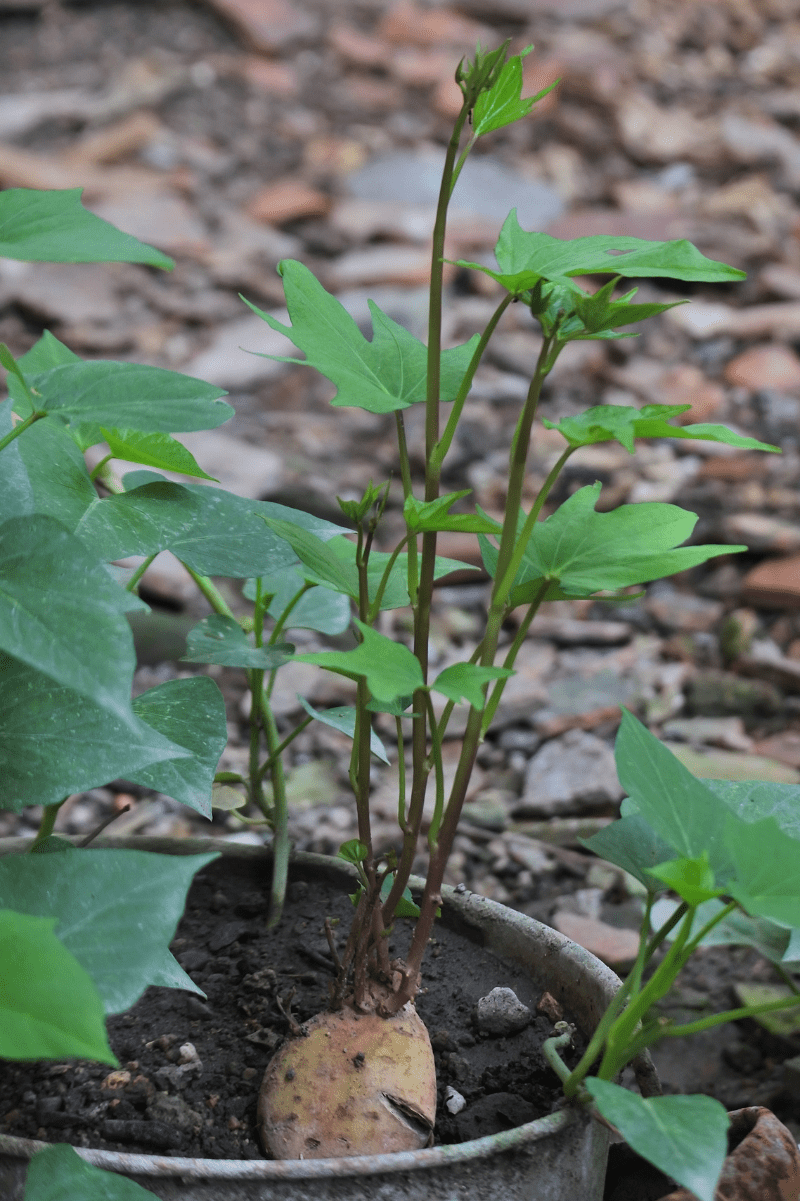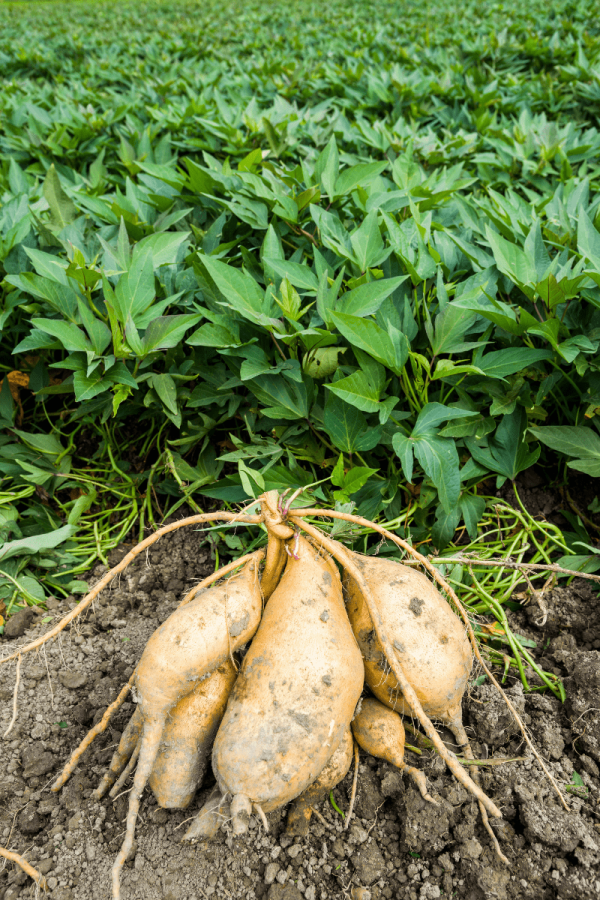Sweet potatoes are one of our favorite vegetables to grow. But how do you pick the right time and method to harvest sweet potatoes? Get answers to these and other common sweet potato questions here.
How long does it take to grow sweet potatoes?
If you’re planting your sweet potatoes from slips or draws, it’ll take anywhere from 100 to 140 days to harvest. That’s roughly three to four months from the date of planting. This is why sweet potatoes grow best in the South, where there are long growing seasons. Thankfully, it’s still easy to learn how to grow sweet potatoes in cooler climates.
What’s a slip?
A slip is a rooted cutting that’s used as the starter plant for your sweet potatoes. You can buy sweet potato slips from garden centers and through seed catalogs. You can also make them yourself in the months prior to planting.
Can you plant a sweet potato from the grocery store?
Yes, but most gardeners use sweet potato tubers or slips from nurseries. These have a greater likelihood of being healthy and disease-free. If you choose to use grocery store sweet potatoes, it’s important to pick organic tubers. Stores often purchase sweet potatoes that are sprayed with a substance that inhibits or prevents sprouting. Choosing organic sweet potatoes or ones sold through greenhouses and nurseries reduces the risk of running into those issues.
Growfully Protip
If planting a grocery store sweet potato, make sure you don’t pick one labeled as “yam” as they are not the same thing. Sweet potatoes are sweet, with yellow or purple skin and dark orange flesh. Yams, on the other hand, have copper skin and a white, starchy interior. The biggest difference is that yams cannot grow in the continental United States, while sweet potatoes can.

How many sweet potatoes will one plant produce?
A single sweet potato vine will produce three to five sweet potatoes. That’s roughly one to two pounds of tubers. If you live in a warm climate, the sweet potato plants might produce six or more tubers per plants.
Growfully Protip
There’s a bit of confusion around the naming of sweet potatoes. Although they have the name “potato,” they’re actually a member of the morning glory family.
When are sweet potatoes ready?
Sweet potatoes are ready to harvest anywhere from 100 to 140 days after planting the slips. They need to be harvested before the first frost because the frost can damage the delicate roots. A sign that sweet potatoes are ready to harvest is the leaves and vine turning yellow. Gently dig up a bit of the root to expose the tubers. If the sweet potatoes have reached a usable size, you can go ahead and harvest them.
How do you harvest sweet potatoes?
To harvest sweet potatoes, cut away the vine and loosen the dirt around the stem of the plant. You want to loosen an area at least six inches deep and 18 inches in diameter. The skin on sweet potatoes is very fragile, so loosening the soil is a vital step.
Gently pull up the primary root and use your hands to dig away the soil and the tubers so you don’t damage the skin of the sweet potatoes. When the sweet potatoes are free of the ground, shake off any excess dirt—but don’t wash them.
Growfully Protip: Avoid using a garden fork or shovel when harvesting sweet potatoes because the skin is very fragile.

Do I need to rotate my crop?
Yes! Crop rotation is vital for growing sweet potatoes because it helps replenish soil nutrients and prevent pests and diseases. Rotating your crop makes sure the soil doesn’t become depleted. Since many diseases and pests overwinter in the soil, proper crop rotation prevents pests that feast on sweet potatoes from being near them the following spring.
Plant sweet potatoes in an area in the garden you planted leafy greens or legumes the previous year. Sweet potatoes can follow lettuce, spinach, endives, beans, peas, and Swiss chard. When planning what to plant the year after sweet potatoes, choose root crops or onion crops such as turnips, beets, parsnip, onion, radish, celery, leeks, or carrots.
How to cure and store sweet potatoes
If you want your sweet potatoes to last for a while in storage, they need to be cured. This allows a second skin to form over the fragile bottom layer of skin, preventing rot. To cure sweet potatoes, allow them to sit out on a sunny day after harvest. After a day, move them to a warm location that’s at least 80°F to complete the curing process. Keep them in a shady location with good ventilation—a porch or shed works well for this. Allow the sweet potatoes to cure for seven to ten days.
Once cured, store the sweet potatoes in a cool location with high humidity, such as a root cellar or basement. Stored properly, the sweet potatoes will last for up to six months after harvest.
Growfully Protip
To extend the life of your sweet potatoes, wrap them individually in newspaper after they’ve cured, then stack them in a wooden basket or crate.







